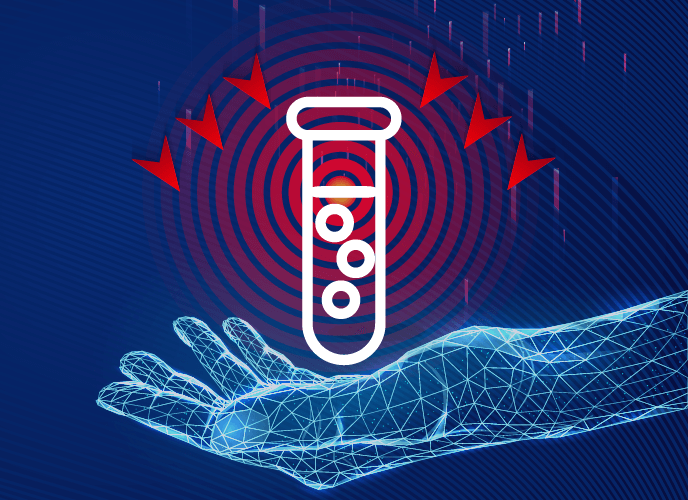“Risk mitigation” is one of our favorite phrases. The best way to prevent yield loss, ensure end user safety, and high quality is to avoid risk from the beginning. What exactly poses a risk to aseptic manufacturing? First and foremost, contamination. Next, human error and faulty equipment. All combined, these can be a recipe for disaster.
So let’s look at how to mitigate risk in aseptic manufacturing from the start.
1. Training and Education
Shockingly, humans are responsible for up to 80% of particles shed in a cleanroom. We are the ones who strategize and work to keep a cleanroom clean… And we are the problem most of the time.
The good news is that this risk can be mitigated through regular, thorough, and creative training. Often, our training becomes stale and routine. This happens as people begin to assume they know proper protocols because they have done it so often, but the Forgetting Curve is very real. It tells us we forget up to 90% of something we learn within 7 days of learning it.
The Forgetting Curve also shows us that reinforcing gowning, cleaning, and other important information regularly and creatively improves retention. So find creative and regular ways to refresh your employees’ gowning and other training to mitigate contamination risks in your cleanroom!
2. Facility Design and Maintenance
If you design your facility with a focus on aseptic principles from a risk based approach as described in GMP Annex 1, you will be able to mitigate risk. This includes implementing proper HVAC systems, unidirectional airflow, and efficient air filtration to maintain clean environments. Conducting regular maintenance on your facility also ensures you are maintaining that high level of design.
3. Gowning and Personnel Practices
As mentioned above, humans are the primary source of contamination in a cleanroom, so establishing strict gowning procedures and enforcing their adherence goes a long ways. This includes the use of sterile garments, gloves, masks, and other necessary personal protective equipment (PPE). Implement and enforce proper hygiene practices, such as handwashing and disinfection protocols, for all personnel entering the cleanroom areas.
4. Change Your Filters
Your cleanroom filters are your first line of defense against contamination. To prolong their life and ensure they are working as they should, they require regular changing, cleaning, and monitoring.
You should also regularly evaluate your filtration strategy. Are your fine filters, like ULPA and HEPA filters, able to function at their best with your current strategy? Are you providing enough relief for them from larger particles?
If you regularly examine your filters and stay open to new strategy ideas, you will mitigate some contamination risks in your cleanroom.
5. Equipment Qualification and Maintenance
When equipment begins to wear from improper maintenance, not only does it lose efficiency, it can shed particles. Thus, you should validate and maintain all equipment used in aseptic manufacturing processes. Performing regular calibrations, preventive maintenance, and routine checks to ensure proper functionality. Additionally, you should establish procedures for cleaning and disinfection of equipment and utensils, and regularly validate these processes.
6. Sterilize and Disinfect
When was the last time you looked at your sterilization and disinfection protocols? Are they being followed to the letter? Implementing validated sterilization and disinfection processes for equipment, tools, and surfaces and ensuring the chosen methods are appropriate for the intended use and consistently monitored and validated for effectiveness goes a long way. You should make sure to use appropriate disinfectants and follow proper application techniques.
7. Quality Control and Release Testing
Quality control should take place from start to finish on the manufacturing line – not just before the product goes out. We recommend implementing rigorous quality control measures throughout the manufacturing process. If you perform in-process testing and release testing, you can verify the quality and integrity of the products with time to address concerns. Monitor critical quality attributes, such as sterility, endotoxin levels, and particulate matter, to ensure compliance and mitigate health risks to the user.
8. Use A Real-Time Monitoring System
One of the best possible ways to mitigate risk in a cleanroom is using a comprehensive, user friendly, real-time monitoring system. This system is designed to alert you immediately when contamination occurs. While many cleanrooms still operate on paper printouts, real-time monitoring allows for immediate action, preventing yield loss and downtime.
9. Documentation and Record Keeping
While keeping detailed records might not immediately seem like a way to mitigate risk, it improves traceability, investigation of deviations, trend tracking, and audits. With well documented and managed data, you can identify dangerous trends before they become a real problem. We recommend using ALCOA+ when handling data. ALCOA+ stands for:
Attributable
Legible
Contemporaneous
Original
Accurate
Complete
Consistent
Enduring
Available
10. Risk Assessment
Last but certainly not least, you should conduct a thorough risk assessment of your aseptic manufacturing process to identify potential hazards, vulnerabilities, and critical control points where contamination can occur. This assessment will help you prioritize and focus your risk mitigation efforts.
Risk mitigation is not something that you deal with once and then it disappears. You should always be conducting internal audits of SOPs, equipment, and systems to ensure best practice.
Most importantly, though, we recommend investing in an EMS that allows you to step into best practices as they are developed. That means a flexible, adaptable, and scalable EMS designed to grow with you and your organization.
Here at LWS, we specialize in creating those systems, as well as supporting our clients in their use. Explore our EMS options today.


